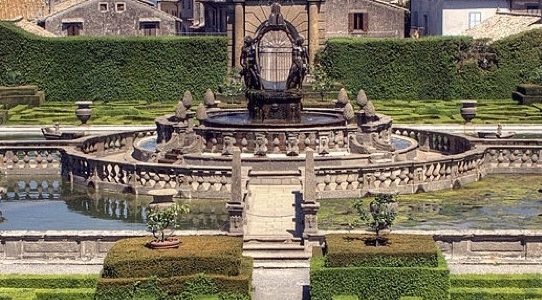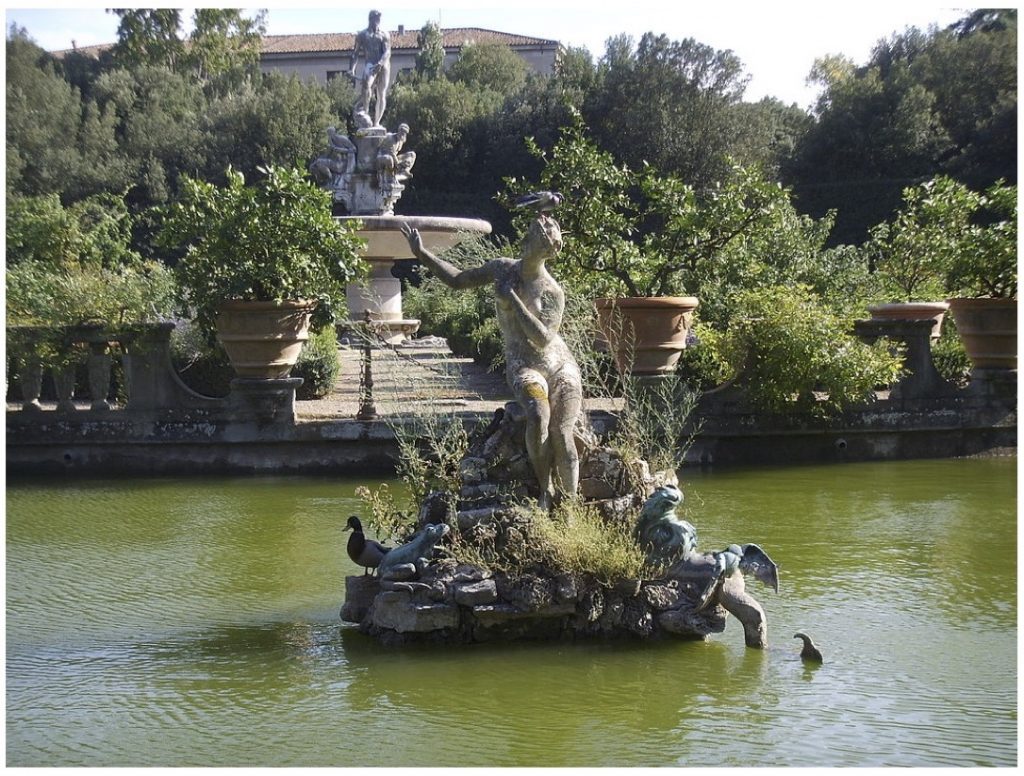
In late 15th century Italy, a new kind of garden style was born. Inspired by classical Roman gardens, Italian artists and architects began to see outdoor spaces in a new light. The transition from small, medieval planting plots used mainly to grow food, to the grandiose gardens that evoke the Italian style today took place over the course of a century. Suddenly gardens became extensions of the home, spaces to fascinate and rejuvenate. Villas and palazzos, once the defining feature of a property, became in some cases accessory to an elaborate garden.
The makings of a classical Renaissance garden start with height. A palazzo or villa sits high up on a hill, and a view of the garden, then the cities and mountains beyond unfold from any window or doorway. Or, if you’re a visitor to the garden, the hill becomes an upward ascent along a central walkway, past symmetrical topiary, statues of mythological creatures and characters, and dazzling water features.
You might see very little color, but you might smell sweet-scented lemons or oranges. You might stray from the central pathway and find yourself suddenly dwarfed by a magnificent fountain, drawn into the depths of a shimmering grotto, or bewitched by the myth of a man or a monster cast in stone by a famous sculptor.
Many of the gardens commissioned and created at the height of the Renaissance are open to the public today. Don’t let another day go by before you plan to visit at least one of these five fantastic Italian gardens:
Villa Lante
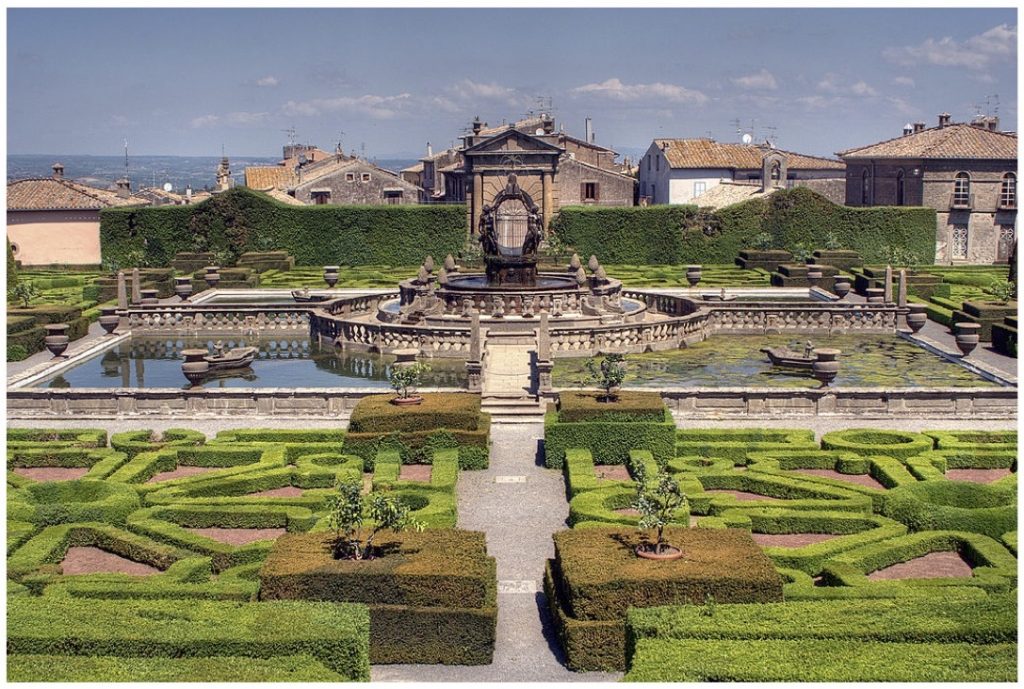
Villa Lante is located in Bangui, Viterbo, Central Italy. The garden sits on grounds that were originally property of the Roman Catholic Church, and dedicated for the use of the local monks. Bishop Gianfrancisco Gambara chose to develop and revitalize the space in 1566, and was the first of two bishops to spearhead the development of the grounds.
Gambara oversaw the construction of the upper garden, and one of the twin houses that ornament the ground-level terrace of the property before he died in 1587. The architect he commissioned was none other than Jacopo Barozzi da Vignola, a respected Renaissance architect.
Thirty years after Gambara’s death, the bishop who succeeded him, Alessandro Peretti di Montalto, continued the work on the garden. He constructed the second house, and put the finishing touches on the garden. The garden is named for the Duke Ippolito Lante, who purchased the property a hundred years after the start of its construction. He made many improvements to the garden that still bears his name today.
The garden at Villa Lante enters onto a flat terrace that leads to the twin villas built by Bishops Gambara and Peretti in the 1500s. They are treated as garden accessories rather than the focal point of the property in true Renaissance garden style, although both were furnished and frequently used. The garden rises through four raised terraces, each featuring geometrically shaped evergreen shrubs framing a central fountain.
As visitors to the garden progress upward toward the highest terrace, they’re passed by cascading fountains of water flowing down in the opposite direction. The ingeniously constructed stone channels that ferry the water downward are thought to include the earliest example of a “stepping cascade” water feature. The progression of the themed fountains and mythological statuary peppered throughout the garden are said to tell the story of Ovid’s Metamorphosis, or the descent of man from the Golden Age of the Greeks to the Silver Age.
Famous Feature: The stepping cascade water feature is shaped like a crayfish, which was part of the Bishop Gambara’s coat of arms.
Take Inspiration: Functionality. Make your water features functional! The third terrace of the Villa Lante Garden features a long stone table, with a channel of water streaming through it (below). This table was built to keep bottles of wine cool for garden visitors of the day!
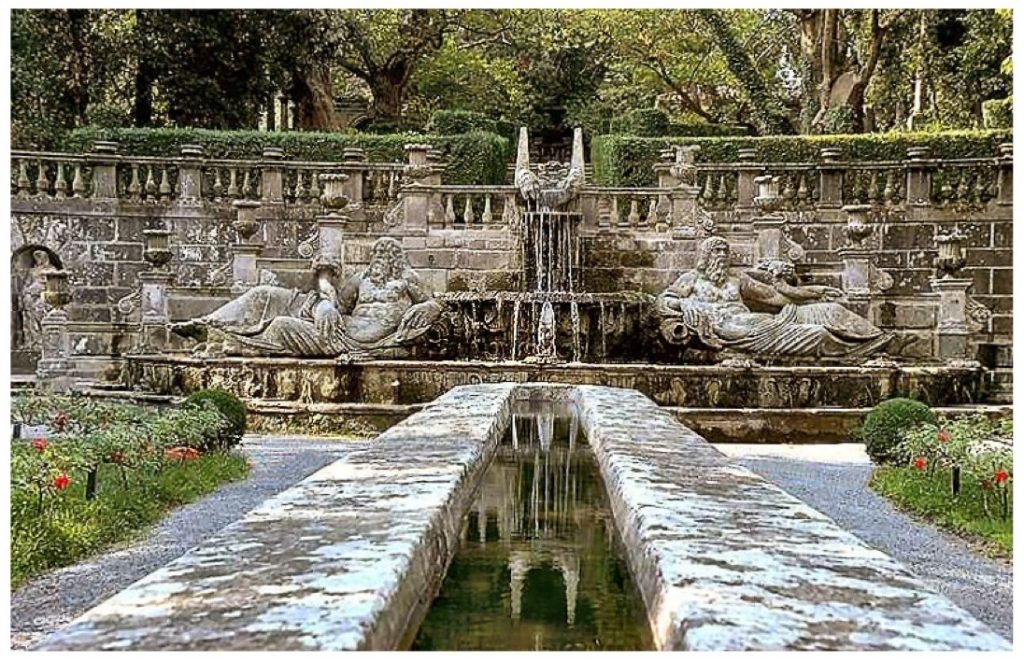
Villa d’Este
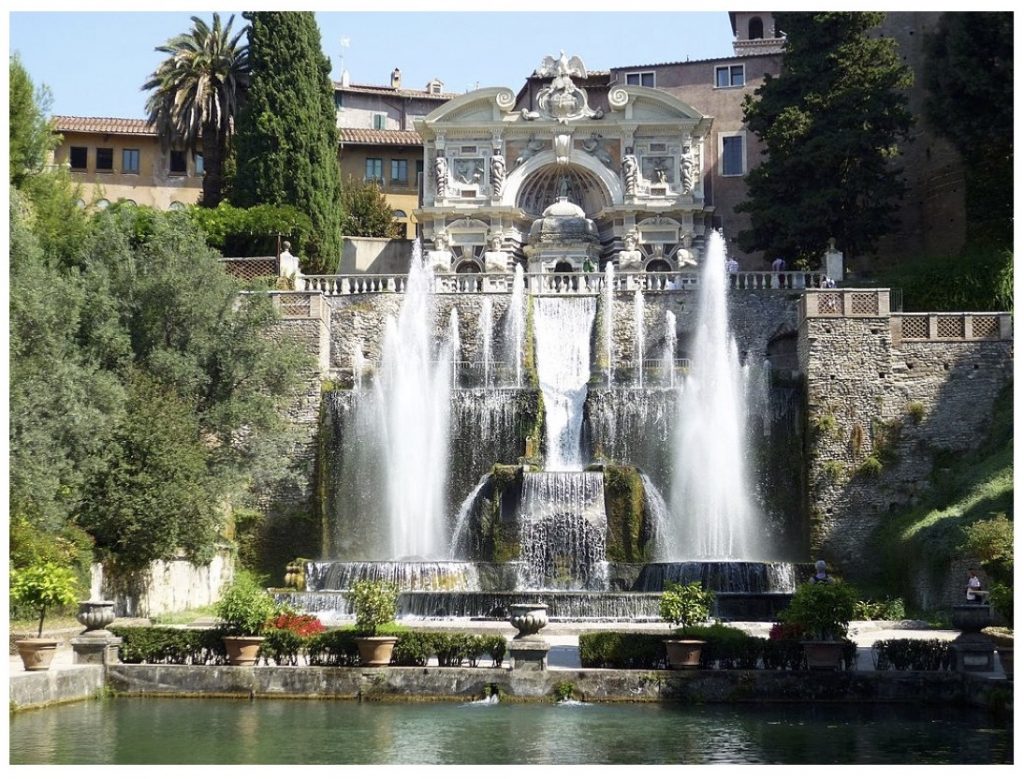
Just outside the city of Rome, in Tivoli, Lazio, is Villa d’Este. The gardens at Villa d’Este were commissioned by Cardinal Ippolito Il d’Este, , the governor of Tivoli. He wanted to create the garden as a monument to the glory of the d’Este family, who, according to d’Este family lore, were related to Roman emperors, and even to the Gods themselves.
The plans for the garden were made by one of the greatest architects of the Renaissance period, Pirro Ligorio. Work began on the gardens in 1560.
Here, more than most gardens, we can see the extent to which the Italian Renaissance garden sought to emulate the classical Roman one. The Villa d’Este was inspired by the extensive compound built by the Roman Emperor Hadrian. Hadrian’s Villa, also located in Tivoli, was multi-functional. It was designed to be used for leisure and relaxation, as a place to host gatherings, conduct political matters, and to show off the power, wisdom, and wealth of the emperor himself. Stone and statuary were excavated from the ruins of Hadrian’s Villa, and reinstalled in the Villa d’Este.
The Villa d’Este is called a water garden, because it’s vast network of fully functional water features is one of the most stunning feats of hydraulic engineering for any time, let alone for the Italian Renaissance period. There are over 500 separate water features contained within the garden, which required the construction of an extensive water carrying system. This system utilized canals, tunnels and aqueducts to divert water to flow into the garden’s many fountains. The water source, the Aniene River, lay above the garden, and was diverted to flow downward, and powers the many water features of the Villa d’Este by the force of gravity alone.
The palazzo, where the Cardinal d’Este and his family lived, sits on a hill at the top of the garden. After the family passed away, the villa and it’s beautiful garden fell into disrepair. It was restored by famous artist Gian Lorenzo Bernini a century later. In 1660, he added a brand new fountain, the Fountain of the Bicchierone, and restored many of the statues and fixtures to their original splendor.
Throughout centuries, the Villa d’Este has proved an inspiration to artists of all kinds. Most famously, Franz Liszt, the pianist and composer, stayed at Villa d’Este several times between 1865-1885, and was inspired to write multiple songs about the property.
Famous Feature: Often, the sound of water itself, flowing, trickling or cascading, was the main intent of the water features, but in other instances, water was used to create different kinds of sound. The first water organ ever invented was designed for the Villa d’Este by Claude Venard in 1571. The Water Organ was marveled at when it was first constructed – nobody could believe that air and water alone made the organ work, and that there wasn’t a person hiding somewhere, playing music.
Take Inspiration: Sound. Recognize and cultivate sound within your garden! Create a small fountain or pond, hang up a set of wind chimes, or simply enjoy the music of the rain as it spatters onto leaves and bounces off of watering cans.
Villa di Castello
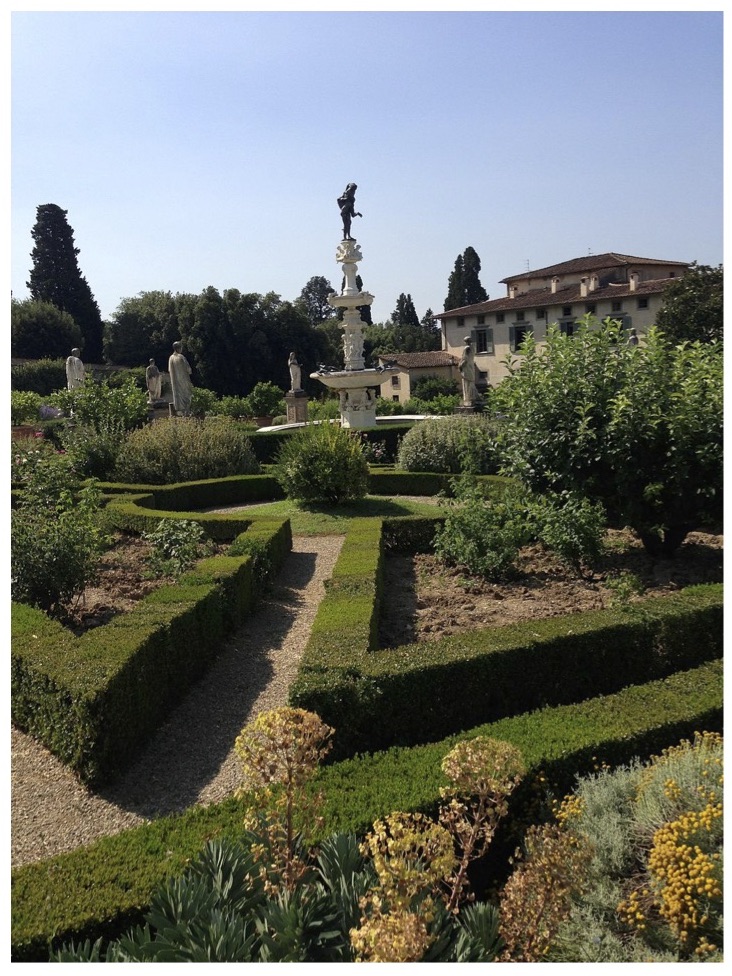
The Villa di Castello is located in Florence. It was purchased by the Medici family, one of the most powerful and influential families in Europe during the Renaissance, in 1477. Cosimo I di Medici, who became Duke of Florence at the age of 17, commissioned the splendid garden that now delights visitors to the property today.
The Villa di Castello was designed by Noccolo Tribolo, a famous architect of the time. Tribolo also designed the renowned Boboli Gardens, located a short distance away in Florence (and number 5 on our list!), and was greatly inspired by his work on the Villa di Castello in his design for Boboli.
The Medici family sponsored many famous artists throughout their reign of influence, including Sandro Botticielli, the painter, and two of his most famous works of art, The Birth of Venus and Primavera were originally housed in the Villa di Castello.
The garden for the Villa di Castello was commissioned in 1538. It was one of the first to popularize the Italian Garden throughout Europe. Like many of the gardens on this list, Villa di Castello was built under a mountainside to allow diverted water to flow down into pipes and power fountains and water features by the force of gravity.
One of the main attractions of the Villa di Castello is an extensive and exotic citrus collection. The Medici family liked to collect and cultivate citrus plants, which they grew in earthen pots all around the garden. Their citrus collection at the Villa di Castello includes many plants that are hundreds of years old, and many rare varieties of lemons and oranges. One of the most prized specimens in the garden is an exotic jasmine plant from India, which was given to the Medici family as a gift in the mid-1600s.
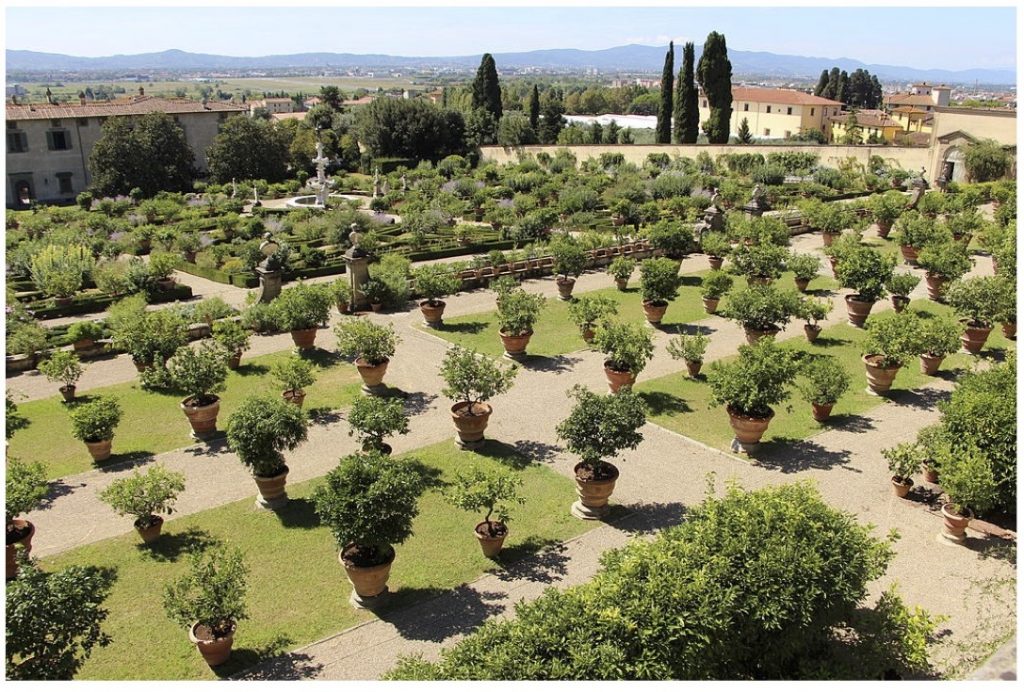
The garden was designed to glorify the Medici family power, their wisdom, and their continual triumph over their enemies. This is dramatized by the statuary, most prominently in the fountain of Hercules and Antares. This fountain was constructed to symbolize Cosimo di Medici’s victory over the enemies who opposed his ascension to the dukedom.
Famous Feature: The Grotto of Animals. Originally, this grotto was constructed so that water flowed down the grotto walls to create the impression of being in the middle of a waterfall. The marble walls are covered in sculptures and carvings of animals. If a humorous mood struck any Medici host, the grotto gate could be locked with a key, and water jets embedded in the walls and in the floors activated to spray unsuspecting guests with water!
Take Inspiration: Smell. If you live in a climate where citrus grows well, think about cultivating some oranges or lemons. Choose plants, like jasmine, rosemary, or lilac, to cast a spell of peace and serenity over any visitor to your garden, even when they have their eyes closed.
Isola Bella
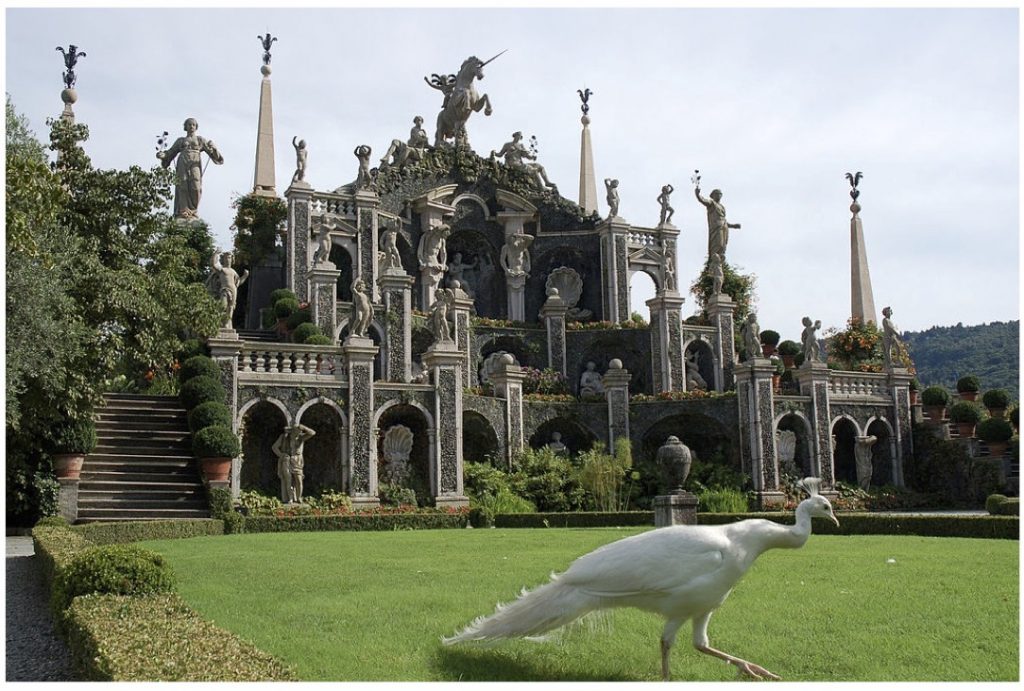
Isola Bella sits in the middle of Lago Maggiore, in Northern Italy. It’s one of the Borromean Islands, named after the Borromeo family who owned them for hundreds of years. This desolate island, which had nothing on it when the Borromeo family bought it in 1632, became an extravagant wonderland over the course of 400 years of design and cultivation.
Carlo the III bought the island, and named it “Isola Bella” for his wife, Isabella D’Adda. He also built a splendid palazzo on the island which has hosted the rich and famous from around the world throughout the years, from Napoleon Bonaparte, to Princess Diana.
Work on the gardens began in 1671, and were overseen by Carlo IV, the nephew of Carlo III. The plan was to transform the barren island into a magnificent ship, a floating dreamscape in the middle of Lago Maggiore. To this effect, the garden includes an Egyptian obelisk, meant to look like a mast. It took 40 years to ferry all of the soil over from the mainland to create the gardens; there was nothing on the island itself when work began. The garden is laid out in 10 terraces, rising higher and higher until at the top, the 10th terrace affords a stunning view of the lake and the surrounding mountains.
The garden was designed as a fantastical pleasure garden, and a romantic ode to love. White peacocks roam free across the island, and in contrast to most Renaissance gardens, color abounds. Colorful flowers like hydrangea, roses and hibiscus are woven throughout the landscape. There is a tropical feel to the island in the form of palm trees and citrus fruit grows all around.
The garden on Isola Bella has been one of the most beloved and most despised in existence. At first celebrated for its daring, over-the-top opulence, many criticized it as garish, gaudy, and much too cultivated once the English garden came into style. Some said that nature had been completely eradicated from the island, and the effect was unnatural.
Edith Wharton, the famous author, who spent time on the island herself, offers a kinder take on the gardens:
“The Isola Bella still seems to many too complete a negation of nature; nor can it appear otherwise to those who judge of it only from pictures and photographs, who have not seen it in its environment. For the landscape surrounding the Borromean Islands has precisely that quality of artificiality, of exquisitely skillful arrangement and manipulation, which seems to justify, in the garden-architect, almost any excess of the fancy.” (Wharton, Edith. Italian Villas and Their Gardens. The Bodley Head, 1904).
Famous Feature: The gardens are topped by a great “Water Theater”, a stone structure that looks like an amphitheater, that spans the 8th-10th terraces. It’s crowded with statues of animals and mythological creatures, and at the uppermost point, on the roof of the theater, stands a gigantic unicorn, the emblem of the Borromeo family.
Take Inspiration: Color. The gardens on Isola Bella are a riot of color and a feast for the eyes. Where most Italian Gardens are moderate and choose to showcase one or two colors at most, on Isola Bella, white, red, yellow, purple, and many different shades of pink boldly compete with each other. Pick a bright new color to introduce into your garden, maybe one nobody will expect!
Boboli Gardens
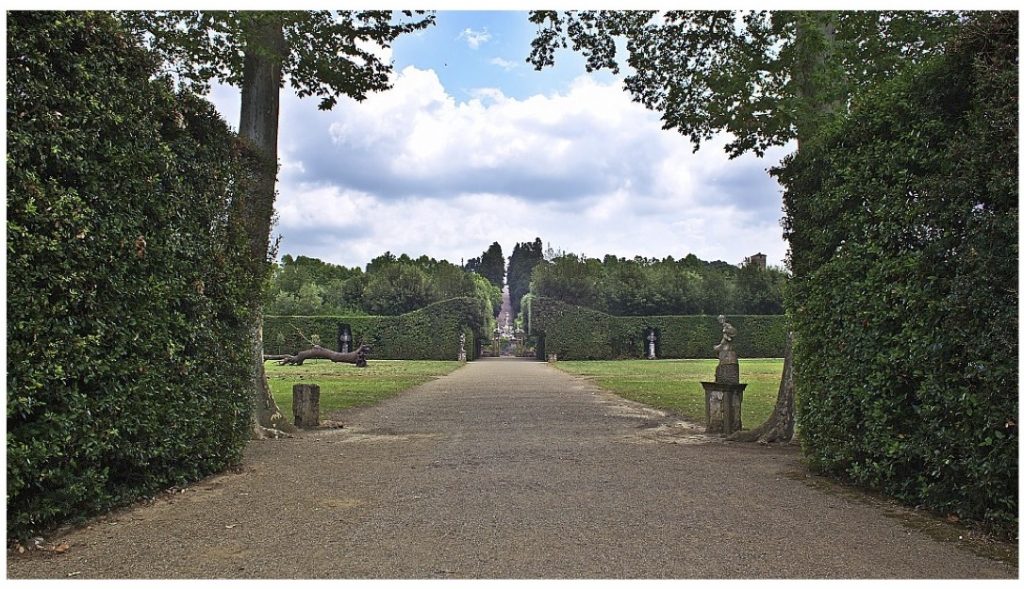
Boboli Gardens is one of the most popular public gardens in Florence, Tuscany. It famous for its beautiful gardens, and also as an open air museum, since the grounds are full of historic statues and works of art originally excavated from ancient Roman and Egyptian ruins.
The gardens surround Palazzo Pitti, which was purchased by the Medici Family in 1549, and after much expansion and renovation, eventually became their primary residence.
Noccolo Tribolo, who also designed the Villa di Castello (number 3 above), was commissioned to design the Boboli Gardens. When he died in 1550, the work was taken over by two architectural masters of the day, Bartolomeo Ammanati, Giorgi Vasari, and the famous artist Bernardo Buontalenti.
The garden opens on a flat green field that leads to a great amphitheater built into the side of the hill. An ancient Egyptian obelisk, which was excavated and relocated from Luxor, rises from the center of the amphitheater.
The garden progresses characteristically uphill along a central axis, and leads to a series of fountains, including the most famous, Fountain of Neptune. There is an alternative axis that runs almost perpendicular to the first pathway, called the Viottolone axis, that travels downward to the end of the garden. The Vittolone leads to a secluded pond hidden by a ring of bushes and trees. At the center of the pond is an “isolotto”, or small island, that houses a fountain. Several statues sit in the pond itself, including statues of Andromeda, and her mythological rescuer, Perseus.
Famous Feature: The Buontalenti Grotto is an extensive cavern made up of three main chambers filled with statues and stalactites. The statues within the grotto depict scenes of nature, the four elements, the Trojan War, and include a replica of The Prisoners, by Michaelangelo, and Bathing Venus, by Giambologna.
Bonus Feature: Visitors to Boboli Gardens are sent off in style by the statue of an obese naked man straddling a tortoise that sits right by the garden exit. This man was “Nano Morgante”, the court dwarf of the Medici Family. His real name was Braccio di Bartolo, and he appeared in several works of art commissioned by the Medici Family.
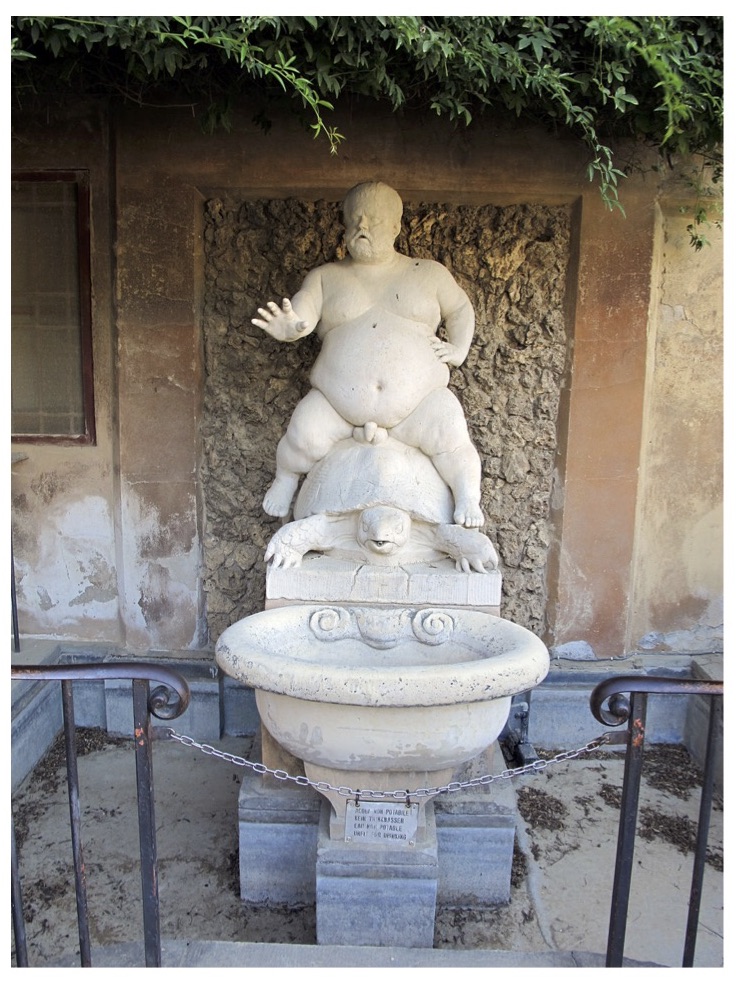
Take Inspiration: Surprise. Add a surprising element to your garden, in the choice of a striking “splurge” plant, a burst of color, or maybe even in the form of a humorous statue.
What are you waiting for? Pick your favorite Renaissance garden and start planning your garden getaway today!
Sources:
http://www.travelingintuscany.com/gardens/italianrenaissancegarden.htm#t1
https://wimastergardener.org/article/the-italian-garden/
https://www.youtube.com/watch?v=ZQFag91j4mQ
https://www.gardenvisit.com/gardens/villa_lante
http://www.travelingintuscany.com/gardens/villalante.htm
https://whc.unesco.org/en/list/1025/
https://whc.unesco.org/en/list/1025/video
https://www.thevintagenews.com/2017/11/26/when-villa-deste-was-commissioned-by-a-cardinal/
https://www.visitflorence.com/what-to-see-in-florence/villa-medici-castello.html
http://www.wallswithstories.com/houses/villa-di-castello-the-charming-residence-of-the-medici-family-in-tuscany.html
https://www.illagomaggiore.com/en_US/26092,Poi.html
https://www.visitflorence.com/florence-museums/boboli-gardens.html

